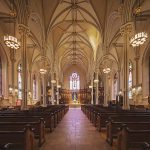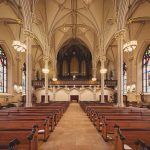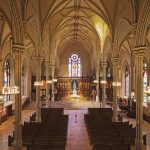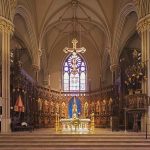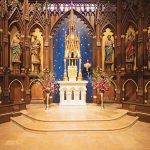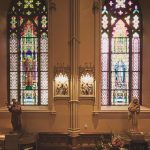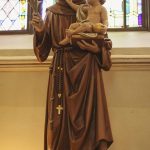St. Patrick’s Old Cathedral, New York (1868)
Designed by the same architect who designed New York City Hall, Old St. Patrick’s was the first cathedral church for the Diocese of New York. Originally built in 1808, the church interior was destroyed by fire on October 6, 1866 and then rebuilt and re-opened on St. Patrick’s Day, 1868. The church was designated a New York City Landmark in 1966, and the cathedral complex was added to the National Register of Historic Places in 1977.
As part of a major restoration project, John Tiedemann Inc./HPCS USA was asked to assess the church’s wood lath & plaster ceilings and walls, comprising almost 40,000 square feet. To quantify the condition of the ceiling, 15 sample test locations were selected from various representative areas across the cathedral attic. The test locations varied in size between 4 and 10.5 square feet. The assessment verifiably concluded that approximately 69% of the plaster’s keys & lugs had retained their structural integrity, which meant that 31% of the key’s & lugs were either broken or missing.
As a rule, when the remaining structural integrity (“as-built” condition) of the plaster keys & lugs drops below 75 percent, John Tiedemann Inc./HPCS USA is obliged to recommend preventative maintenance action – that is, consolidation treatment, which returns the plaster, in its entirety, to full strength and gives it a maintenance-free, renewed service life of at least 50 years.
Following a peer review of the 55-page Condition Assessment Report, John Tiedemann Inc/HPCS USA was commissioned to consolidate the plaster ceilings and walls. 22,000 square feet of ceiling were treated directly with HPCS consolidation products while 18,000 square feet of walls were treated from a blind location using the HPCS Remote Consolidant Applicator. The consolidation work is guaranteed for 25 years.
In addition to the consolidation work, John Tiedemann Inc. repainted the entire church with a multi-chromatic paint scheme and glazes. We also restored the plaster statue and Stations of the Cross.

